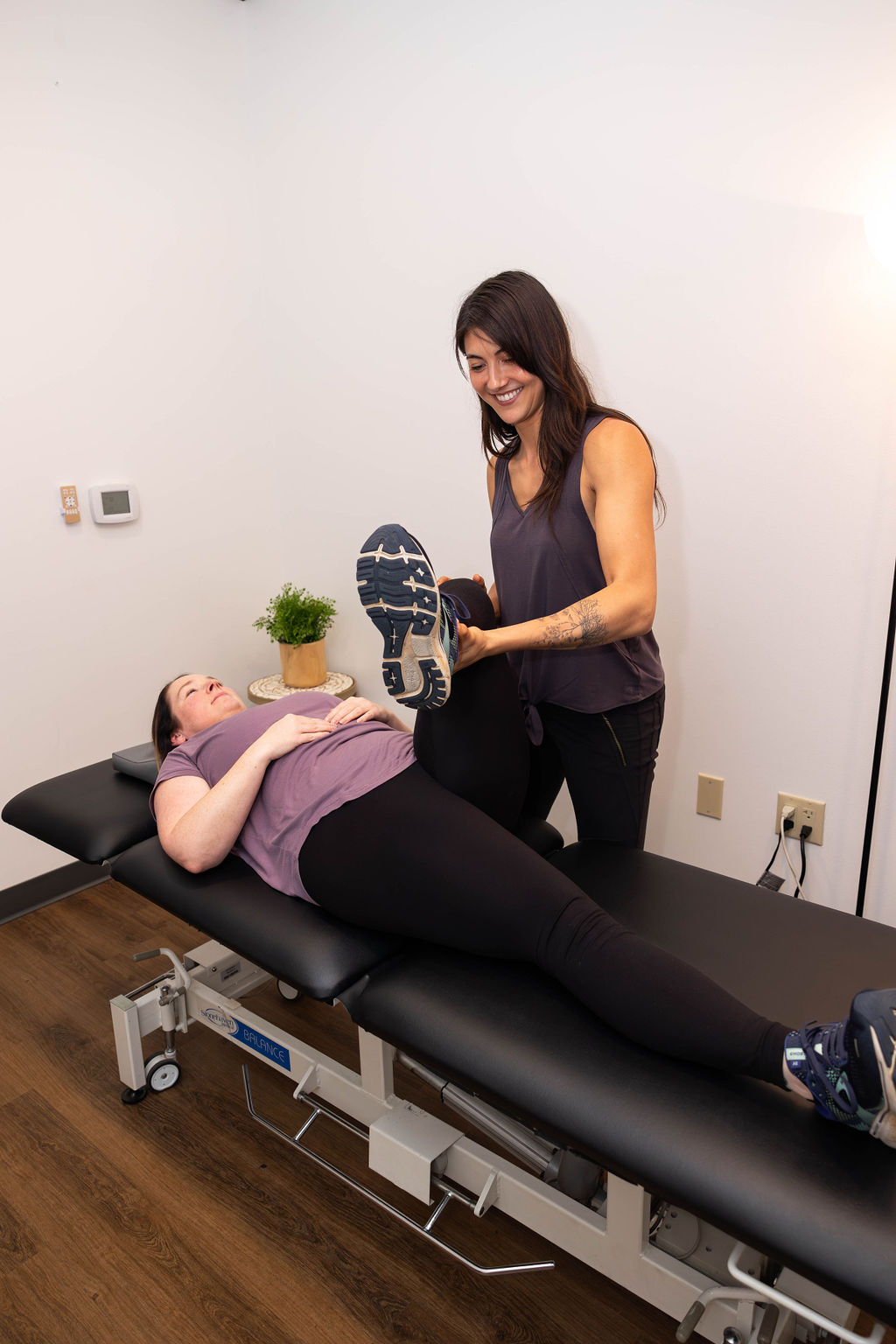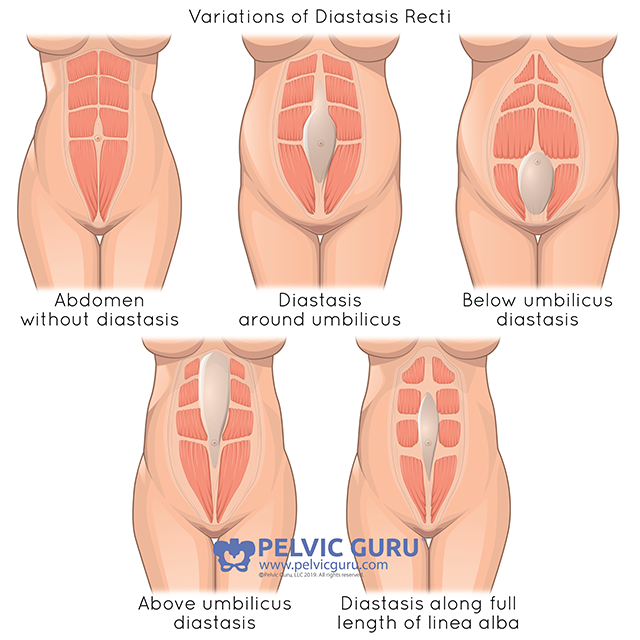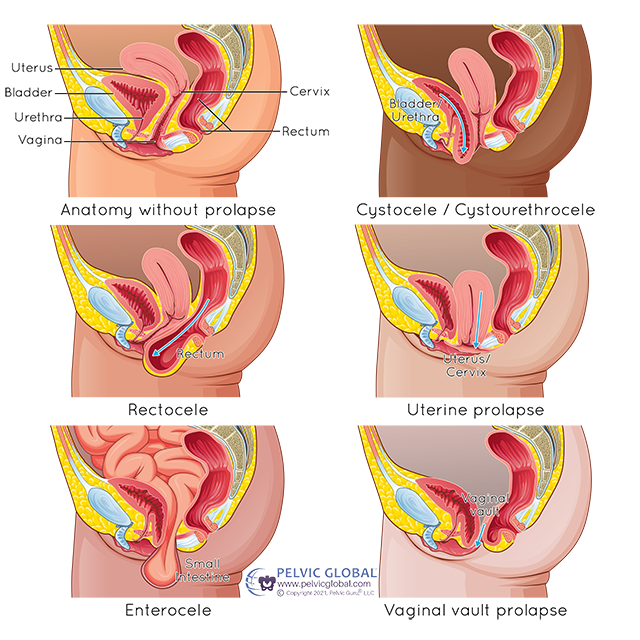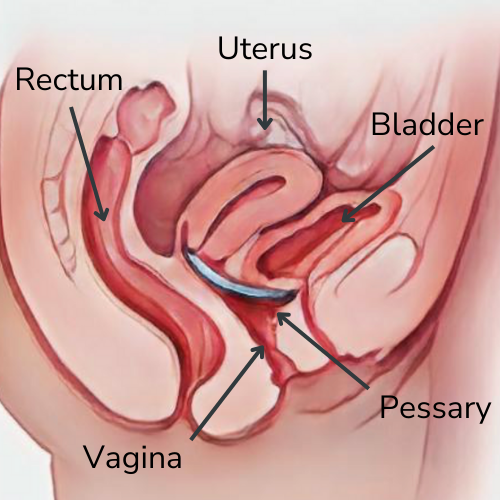Pelvic Pain and Dysfunction
We help people break free from pain, discomfort, & restrictions through 1:1 care by a Doctor of Physical Therapy through our integrative approach

Pelvic Pain and Dysfunction
We help people break free from pain, discomfort, & restrictions through 1:1 care by a Doctor of Physical Therapy through our integrative approach.
We are a first trauma-informed clinic. This means provide a judgement-free environment where we listen, provide guidance, and create a safe space for you to understand how to move your body.
of vagina owners in the U.S.
are affected with one or more pelvic floor disorders.
Of vagina owners
will experience pain during sex at some point in their lifetime.
of vagina owners in the u.s.
have endometriosis.

What is Pelvic Floor Physical Therapy?
Pelvic floor physical therapy is designed to help people with vaginas safely return or continue to exercise during pregnancy, postpartum throughout perimenopause and menopause and anything in between. Pelvic floor PT is also for people who have not had children and are experiencing pelvic floor symptoms such a urinary urgencies, pain with sex, impaired orgasms and pelvic pain.
Our approach to pelvic floor physical therapy goes beyond simply assessing only the pelvic floor. We assess your overall mobility and movement patterns to determine why the pelvic floor symptoms are occurring. Looking at the pelvic floor alone does not ensure long-term results because it is only one piece of the puzzle.
We want to help you learn how to move, exercise and understand your body so you can feel better long-term. Think of it as an investment in your overall health. Your health is priceless.
Treatments can be performed internally (intra-vaginally) and/or externally to reduce pain/dysfunction and address the root cause of your symptoms.
Your physical therapist will walk you through every step of the assessment and will ensure you feel comfortable during each treatment session.
Diagnoses That We Treat…
Chronic Hip, Low back and Pelvic Pain
What Is It?
Pelvic floor dysfunction goes beyond the common issues of urinary leakage and postpartum symptoms. It is important to recognize that chronic hip, low back, and pelvic pain can often be misdiagnosed when the underlying cause is actually pelvic floor dysfunction.
The narrow space of the pelvic outlet can be directly influenced by factors such as constipation, bladder irritation, menstrual cycle, and prolapse, leading to pain and discomfort. Identifying and addressing pelvic floor dysfunction is crucial in effectively managing these symptoms.
Many people complain that they have:
- Nagging pain that isn’t reducing with traditional physical therapy
- Pain that increases around their menstrual cycle
- Pain that worsens as the day goes on
- Pain that increases with physical activities and emotional stressors

Chronic Hip, Low Back and Pelvic Pain

Rehab Post-Hysterectomy
Rehab Post-Hysterectomy
What is it?
A major surgery in which the uterus is removed. This can sometimes include mesh, removal of the cervical and/or ovaries.
It is crucial for individuals to recognize the significance of post-hysterectomy rehabilitation. During a hysterectomy, the top of the vagina is connected to the uterine ligaments.
Multiple portal sites can lead to abdominal weakness, pelvic floor weakness, and difficulties in resuming exercise. Proper rehabilitation can address these issues and aid in the recovery process, even if it has been many years.
Many people complain about:
- Heaviness in the pelvis
- Pelvic pain
- Pain with sex
- Accidental leakage (bowel or bladder)
- Low back pain that began after the surgery
- Fear of returning to exercising safely
- Feel gaslit about the surgery recovery being much harder than expected
Urinary Incontinence
What Is It?
This is accidental leakage or increased urgency to urinate often. Many people believe they simply need to accept it because they were pregnant- this is not true!
This can be successfully treated in pelvic floor physical therapy.
Many people complain that they:
- Pee with they sneeze or cough
- Fear they will leak when running or jumping
- Fear not being around a restroom because of an urgency to pee often

Urinary Incontinence

Diastasis Recti
Diastasis Recti
What Is It?
This is the separation of the middle (linea alba) of the rectus abdominis (aka the “six” pack muscle).
As you can see in the picture, this can occur in different areas of the abdomen.
This is common during pregnancy and can continue to occur after giving birth.
Many people complain that they:
- Still “look pregnant”
- Feel like they cannot engage their abdominals
- Notice bulging with using their abdominals
Cancer Recovery
What is it?
It is pelvic floor or orthopedic dysfunctions caused by surgeries, radiation, chemotherapy etc.
Many people complain about:
- Heaviness in the pelvis
- Pelvic pain
- Pain with sex
- Vaginal dryness/pain
- Accidental leakage (bowel or bladder)
- Muscle tightness post radiation
- muscle weakness from repeated treatments

CANCER RECOVERY

Prolapse
Prolapse
What Is It?
This is when the pelvic organs start to “fall down” into the vagina. The image shows the different types of pelvic organ prolapse.
Many people complain that they:
- Feel heaviness in the bladder, back or around the vaginal opening or anus
- Feel like they are wearing a tampon
- Notice bulging around the vagina or anus
- Experience double voiding, aka peeing a few minutes after you already have
Pessary Fitting for Prolapse Management
What Is It?
A pessary is a medical device that is inserted into the vagina to provide support for pelvic organ prolapse. By properly fitting a pessary, it can help avoid the need for surgery by providing structural support to the pelvic organs.
By using a pessary, individuals may be able to avoid surgery and effectively manage their prolapse long term. In some cases, with proper support and strengthening of the pelvic floor, individuals may eventually be able to wean off the pessary as their pelvic floor muscles regain strength and function.
- You have prolapse that didn’t improve with pelvic floor PT
- You are wanting to avoid prolapse surgery
- You are wanting to avoid a hysterectomy caused by prolapse

Pessary Fitting

Menopause
Perimenopause and Menopause
What Is It?
Entering into perimenopause and/or menopause is life changing and can be distressing if you cannot find answers for help. Perimenopause can start around the age of 38 (or earlier usually due to a medical treatment such as chemotherapy or a hysterectomy) Pelvic floor physical therapy can directly help pelvic floor symptoms that may be a result of transitioning into menopause.
- Do you feel dismissed by other health care practitioners that your symptoms are “due to age”?
- Are you not enjoying sex as much because of low libido, vaginal dryness or impaired orgasms?
- Do you feel heaviness in your pelvis as if you have a tampon in?
- Are you experiencing recurrent vaginal infections such as yeast infections, or UTIs?
- Are you experiencing increase urge to pee all the time?
These symptoms are REAL and should be treated this way. We are sorry for anyone who has invalidated your feelings about your body.
These symptoms can be due to the hormonal changes you are experiencing as you transition to a new phase of life. We can help you navigate these changes through our extensive referral next work while addressing your pelvic floor symptoms.
Pain with Sex
What Is It?
Pain with sex is unfortunately a common dysfunction of the pelvic floor. However, we have helped many return to having pain free sex.
Many people complain that they:
- Cannot tolerate any vaginal penetration
- Have pain with deep penetration and initial penetration
- Have pain or discomfort in certain sexual positions

Pain with Sex

Endometriosis
Endometriosis
What Is It?
Endometriosis is a disease that occurs when tissue similar to the lining of the uterus (endometrium) grows outside of the uterus and causes inflammation and pain.
Endometrium outside of the uterus typically attaches to, or in-between, the pelvic organs/structures such as the bladder, intestines, ovaries, rectum, etc.
Many people complain that they have:
- Painful periods
- Pelvic/abdominal/back pain
- Heavy bleeding
- Infertility
- Pain with sex
- Painful ovulation
- Digestive issues
- Constant fatigue
- Painful urination/bowel movements
Postpartum Challenges
Did you know that postpartum is anytime beyond birth, including menopause? Just because you had a child years ago, it isn’t too late to get your symptoms checked out.
- Are you unsure how to return to exercise after having a child?
- Are you leaking when you jump?
- Does it feel like you can’t engage your butt or abdominal muscles?
- Do you feel like you can’t control your body as well?
These are common questions that occur postpartum. Just because you are cleared at 6-8 weeks doesn’t mean you can safely return to your normal exercise routine. It is important that you can take time to invest in your new body to learn how to safely return to running, lifting, jumping, strength training and more!

Postpartum
FAQ
What postpartum or pelvic floor conditions do you treat?
- Urinary incontinence (urgency or impaired bladder control)
- Pain with sex
- Prolapse
- Vulvar pain
- Pregnancy and Postpartum care, including returning to exercise
- Diastasis Recti
- Pelvic, hip, SI joint and low back pain that has not resolved with orthopedic physical therapy or other conservative treatments
I am on my period, can I still come for an appointment?
Yes! We can complete all activities externally if you are not feeling well enough for an internal assessment.
How many visits will I need?
Each diagnosis is different. It depends on the diagnosis, how long it has been occuring for and symptom intensity. We will make recommendations on how often to attend after your initial evaluation, but we work with your budget and time to make the best possible plan to fit your needs.
Because we are 1:1 you the full time, most people only need to come anywhere from 6-10 visits.
What is an internal assessment?
An internal assessment is when your physical therapist assesses the 3 layers of the pelvic floor through the vagina or rectum. We also assess strength and coordination as well. However, if you are uncomfortable with this, we can complete everything externally.

